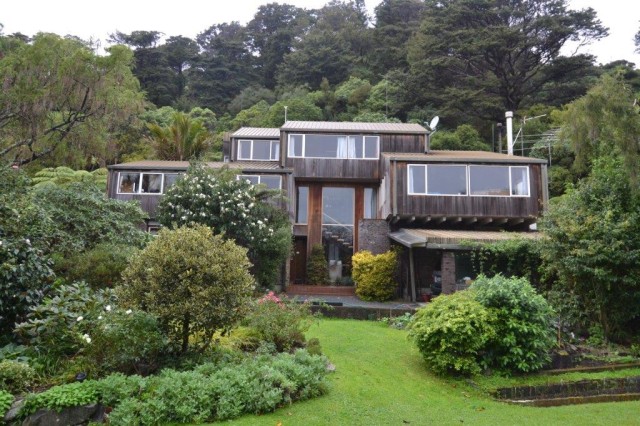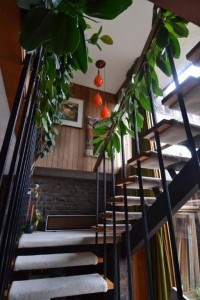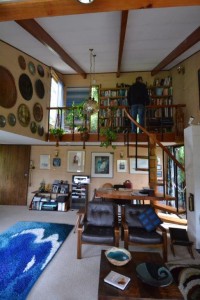Heritage Houses in the Hutt
I took a short break this week in the middle of some design deadlines to visit to a John Scott 1970s’ gem, still owned by the friends of John who commissioned it. (Thanks to Lower Hutt architect Bruce Sedcole for organising the visit).
I’m both a professional and personal fan of John and his work, and deeply admire his contribution to Māori architecture and defining bi-cultural architecture in 20th century New Zealand.

So it was an absolute joy to take a trip to Lower Hutt to see and photograph this multilevel wonder of a house that both perfectly melds with its site and has acted as a 40-year life affirming crucible for its owners and their fortunate children.
It was built at the same time as John’s best known oeuvre Futuna Chapel (justifiably represented at this year’s Bienalle in Venice).
Like Futuna it clearly expresses its design intent with a magnificent clarity of structure. Built around a central stairway it provides a huge variety of spaces for domestic activities within a consistant spacial expression.

Built using what would be an impossible amount of native timber in today’s building market, it leaves the feeling that you are visiting a magical treehouse.
 It is a house that heritage authorities should take note of.
It is a house that heritage authorities should take note of.
Perhaps that old horse Heritage is sick of being flogged, but it is true in my mind at least, that the Hutt Valley, which s also home to a number of Chapman Taylor houses, doesn’t seem to have any legislative protection whatsoever.
Miss M and I had a quick trip to Rotorua recently and while she was visiting friends, I took the opportunity to take a look around the Lockwood headquarters.
If modern day press is to be believed, pre-fabricated houses are a recent phenomenon, so I was somewhat surprised to learn that the first Lockwood – a market leader in pre-fabrication, was built in the 1950s in Hine Rd. Wainuiomata. Another Hutt contendor for heritage status.
Heritage preservation should not only be for the most grand or prominent buildings, but should also speak of the stories and circumstances that help build our nation, and be kept for future generations.
A 2012 film documentary about the fate of famous architectural dwellings in Long Island in the US alerts us to th danger of demolition and the increasing development pressure driven by escalating land values on significant architectural works.
While the Hutt Valley is no Long Island, some of the issues around the pressure of development are the same. It may be that the authorities consider these houses to be ‘future heritage’ so not worthy of consideration just yet.
My concern is that unless they are recognised now, they may not make it to the Gold Card.
